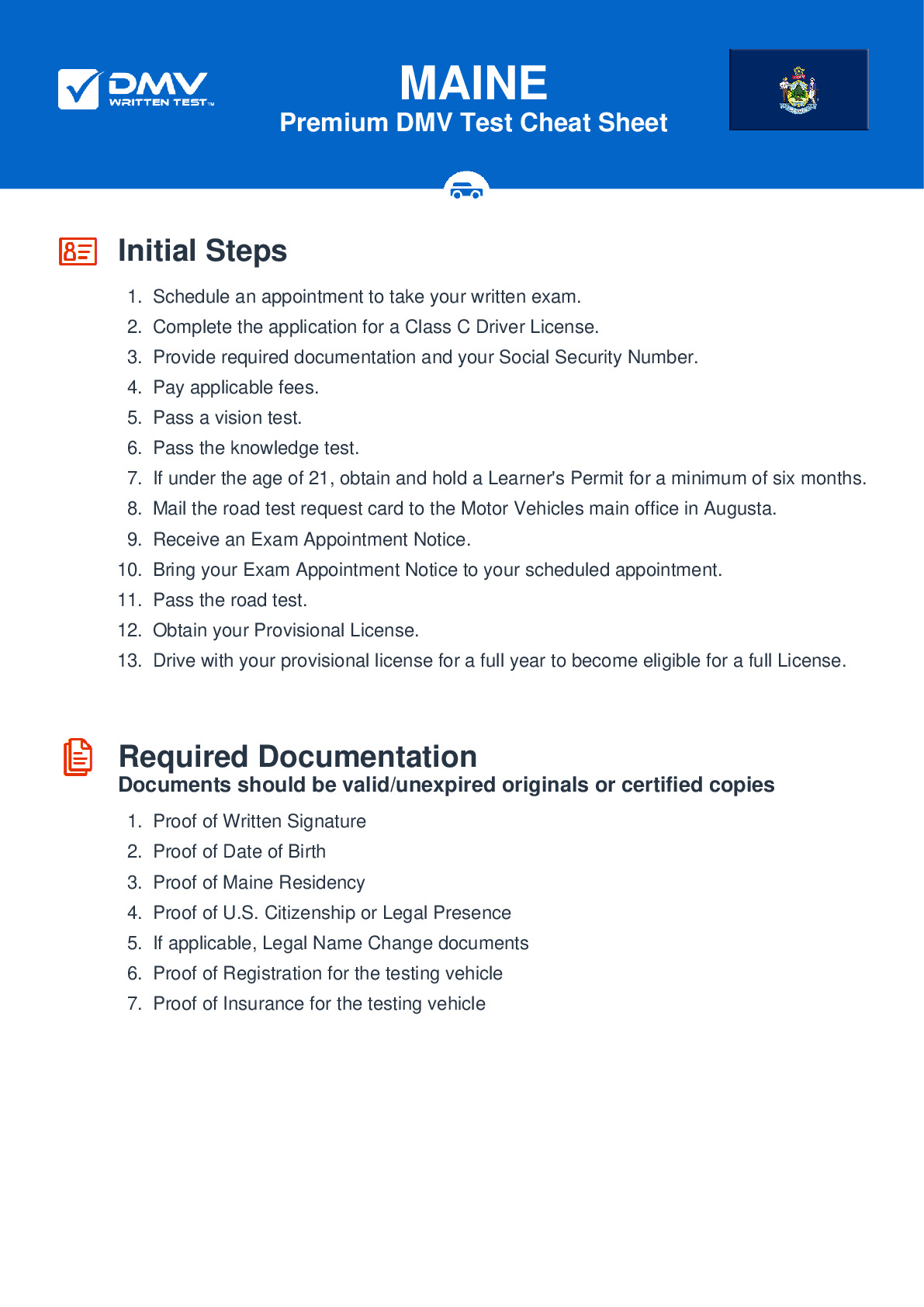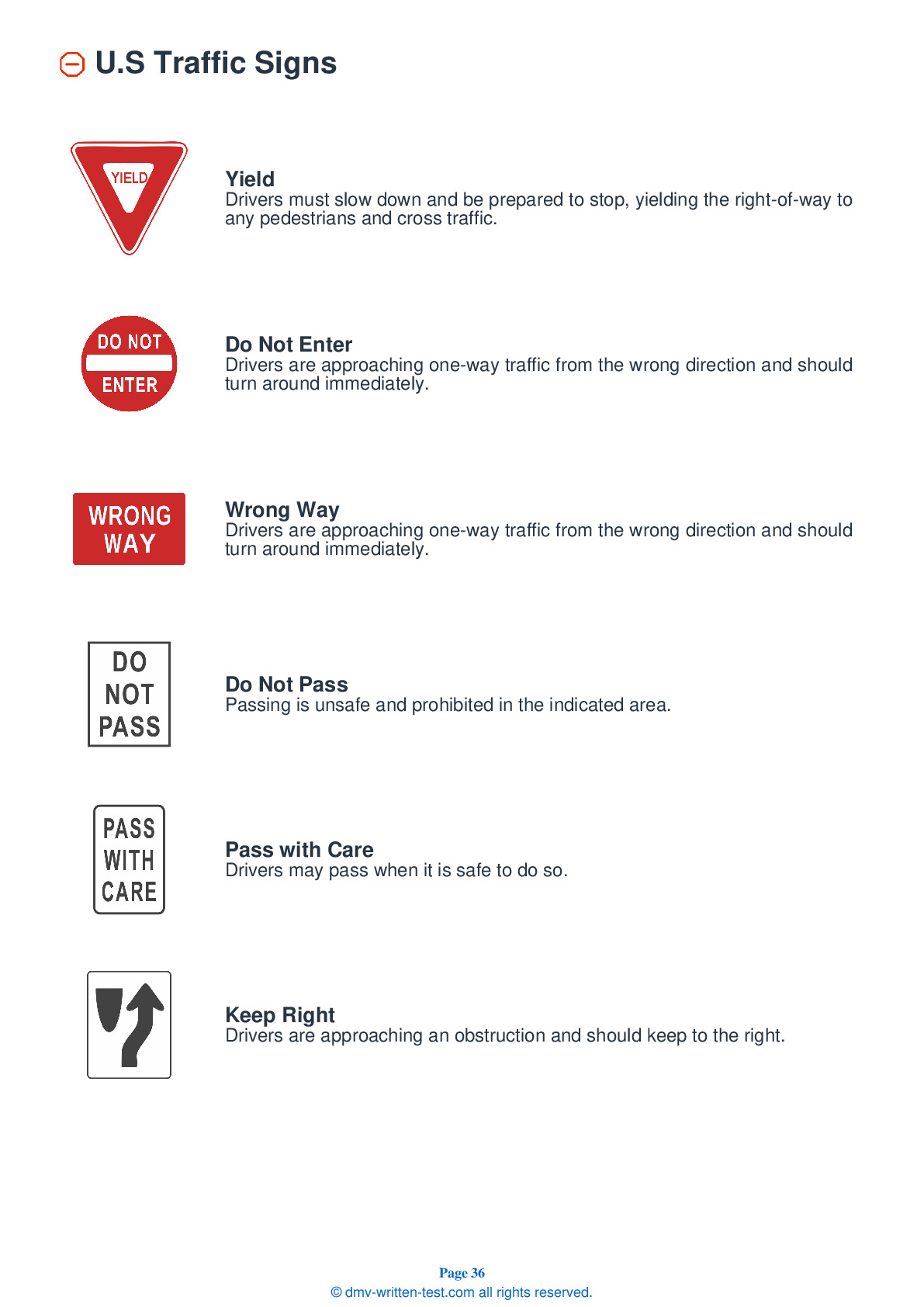2025 Maine Permit Test 5
The following questions are from real DMV written tests. These are some of the actual permit questions you will face in Maine. Each permit practice test question has three answer choices. Select one answer for each question and select "grade this section." You can find this button at the bottom of the drivers license quiz. For a complete list of questions and answers for Maine please visit https://cheat-sheets.dmv-written-test.com/en/maine/car.
Number of Tests
Number of Question
Passing Score
41. When parking your vehicle on any hill:
Explanation
When parking on a hill, you should always leave your vehicle in gear or in the "park" position. If there is no curb, you should turn your front wheels so that the vehicle will roll away from the center of the road if the brakes fail. If there is a curb, the front wheels should be turned toward it (if headed downhill) or away from and gently touching it (if headed uphill).
42. When entering a highway from an entrance ramp, you should generally:
Explanation
Entrance ramps for highways often have acceleration lanes. When merging with traffic from an acceleration lane, you should put your signal on, look for an opening in traffic, accelerate up to the speed of traffic, and merge into an opening in traffic.
43. This sign means:

Explanation
A triangular red and white sign indicates that you must yield the right-of-way.
44. Drivers turning left must yield to:
Explanation
Drivers making a left turn must yield to all vehicles approaching from the opposite direction. This includes bicycles and motorcycles.
45. It is unlawful to:
Explanation
It is illegal to cross the centerline to pass when driving on hills, in curves, and in other locations where you cannot see ahead far enough to pass safely. You may not pass at street crossings, at railroad crossings, where signs indicate no passing zones, or where a solid yellow line is next to your lane. You may not pass when the vehicle in front of you has stopped for a pedestrian or when driving in work zones where passing would be hazardous.
46. Your tire blows out while you are driving. You should:
Explanation
If you experience a tire blowout, do not immediately apply the brakes. Grip the steering wheel firmly and steer to remain in your traffic lane. Reduce your speed gradually by releasing the accelerator and staying off the brakes. Once you are moving very slowly, apply the brakes lightly and pull off the road into a safe area.
47. Double solid yellow line markings down the center of a road indicate that passing is:
Explanation
A double yellow centerline means that it is prohibited for traffic from either direction to cross the centerline to pass.
48. A driver should:
Explanation
Although the right-of-way rules provide a guide to determine who should yield the right-of-way at an intersection, no one should assume they automatically have the right-of-way. The situation and circumstances at an intersection must always be considered. Drivers should yield their legal right-of-way if it can help prevent a collision.
49. The most effective thing you can do to reduce your risk of being injured or killed in a traffic crash is to:
Explanation
Wearing your seat belt is the single most effective thing you can do to reduce your risk of death or injury while driving.
50. You enter a designated turn lane to make a left turn at an upcoming intersection. There is oncoming traffic. You should:
Explanation




